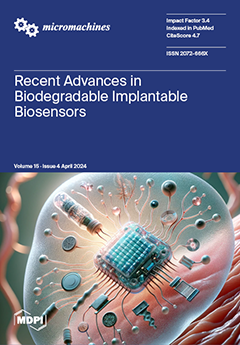Open AccessArticle
Extending the Depth of Focus of an Infrared Microscope Using a Binary Axicon Fabricated on Barium Fluoride
by
Molong Han, Daniel Smith, Tauno Kahro, Dominyka Stonytė, Aarne Kasikov, Darius Gailevičius, Vipin Tiwari, Agnes Pristy Ignatius Xavier, Shivasubramanian Gopinath, Soon Hock Ng, Aravind Simon John Francis Rajeswary, Aile Tamm, Kaupo Kukli, Keith Bambery, Jitraporn Vongsvivut, Saulius Juodkazis and Vijayakumar Anand
Cited by 1 | Viewed by 1325
Abstract
Axial resolution is one of the most important characteristics of a microscope. In all microscopes, a high axial resolution is desired in order to discriminate information efficiently along the longitudinal direction. However, when studying thick samples that do not contain laterally overlapping information,
[...] Read more.
Axial resolution is one of the most important characteristics of a microscope. In all microscopes, a high axial resolution is desired in order to discriminate information efficiently along the longitudinal direction. However, when studying thick samples that do not contain laterally overlapping information, a low axial resolution is desirable, as information from multiple planes can be recorded simultaneously from a single camera shot instead of plane-by-plane mechanical refocusing. In this study, we increased the focal depth of an infrared microscope non-invasively by introducing a binary axicon fabricated on a barium fluoride substrate close to the sample. Preliminary results of imaging the thick and sparse silk fibers showed an improved focal depth with a slight decrease in lateral resolution and an increase in background noise.
Full article
►▼
Show Figures






